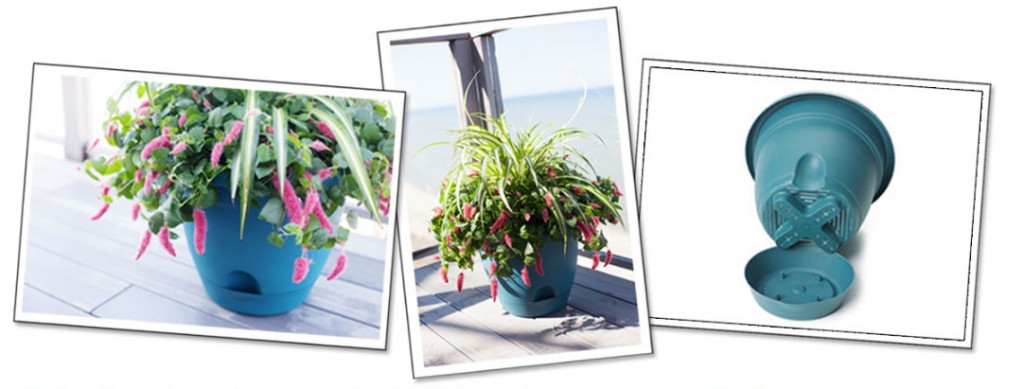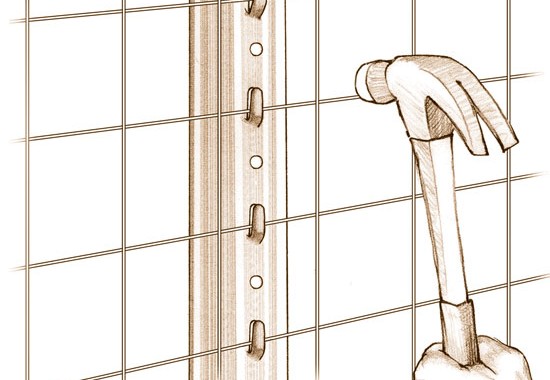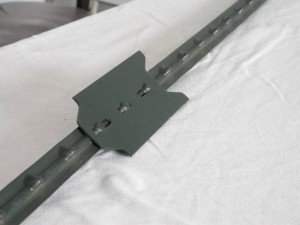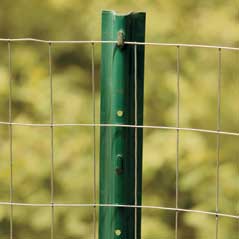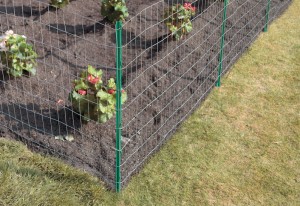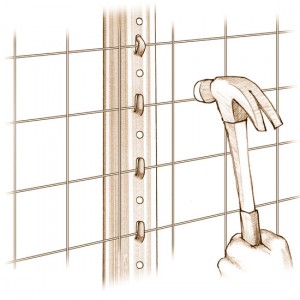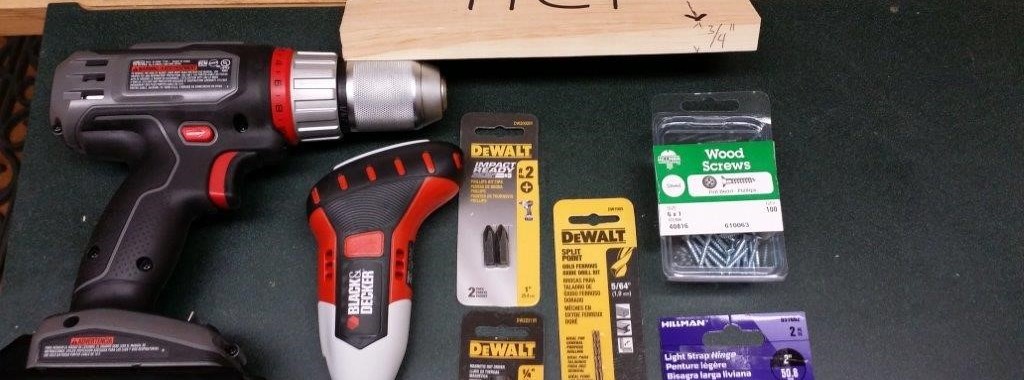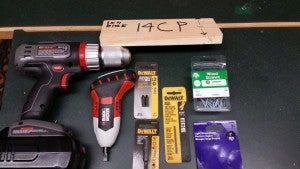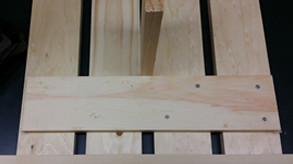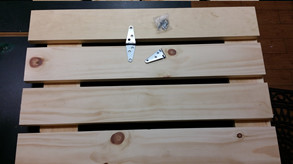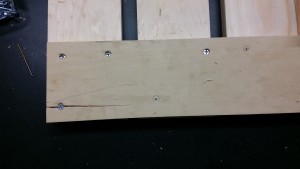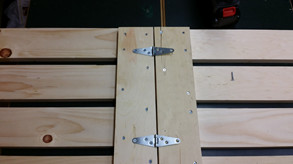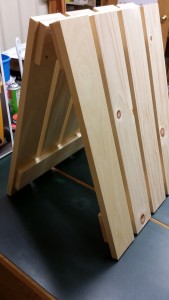
What could be more charming than a small wooden bridge to accent a water feature or help you step over uneven sloping in your garden? And, it’s easier than you think to create your own bridge! Just follow these simple instructions for a sturdy, arched garden bridge with handrails that you can paint or stain any color you like.
Here’s what a small garden bridge DIY project requires:
Materials:
- (2) 2x12s hardwood (for support stringers)
- (13) 2x6s hardwood (for floor planks)
- (2) 8’ 4×4 treated pine post (for handrails), cut into 6 32” posts
- 25” Length of bendable conduit (to create arch guide on stringer)
- Benjamin-Moore Paint or stain (available at GNH) & brushes
- Wood screws (2” stainless steel)
- Wood nails
- Pencil (for marking)
Tools:
- Circular saw
- Jigsaw
- Electric screwdriver
- Drill/drill bit (1/2”)
- Hammer
- Wood planar
- Vice/wood clamps
1. Draw Arches on the 1st Support Board (Stringer)
Lay one of the 2×12 boards flat to prepare to sketch pencil guides for the top and bottom arch shapes:

There’s a simple trick to creating a perfectly even archway – and it works every single time! First, drive a guide nail on each end of the board. Next, bend a length of plastic conduit between the two nails (see diagram above), and use the conduit as a guide to draw the arch onto the board with your pencil.
For the lower arch, drive two nails into the lower side of the wood, each 18” from end. Repeat the process of bending the conduit between the nails and drawing the lower arch onto the wood.
You will cut the 1st archway, and then use that as a guide for the 2nd archway, so there’s no need to measure twice!
Tip: Leaving 18” from the end of the boards on the bottom cut ensures that there will be plenty of support on the stringers for the weight of the bridge.
2. Cutting & Sanding the Stringers
The easiest way to cut the top arch from the first stringer board is by a series of short straight cuts using a circular saw. For the bottom arch, a jigsaw works best – just be sure to move slowly to get through the thick wood without damaging the blade!
Now, lay the finished stringer atop the second 2×12 board, and use it as a guide to draw the arches onto the second board in pencil. Cut the second board.
Finally, clamp both stringers together and use a wood planar to smooth out any rough edges in your archway cuts.
Paint stringer boards white (or any color or stain you choose)! We suggest Benjamin-Moore exterior paints or Arborcoat stains – available at GNH Lumber!
Allow to dry.
3. Cutting & Drilling the Planks
Cut your hardwood 2x6s into 36 inch planks. Place the stringer boards parallel on the ground and measure 32 inches between them, top and bottom (to allow for 2” of plank overhang).
Place a hardwood plank onto the stringers and arrange so that there is even overhang on both sides. Mark and pre-drill two holes on each side of the plank (all the way through to the stringers below). Drill 2” stainless steel screws to tighten.
Next, place the second plank onto the stringers. Using a carpenter’s pencil, measure a space between the first plank and the next. Now, repeat the steps above to secure the plank in place.
Continue working from one end of the bridge to the other until all the planks are secured to the stringers!
4. Attaching Posts & Handrails
If you choose to add posts and rails to your garden bridge, cut your 4 x 4 posts into four 32” lengths, and paint them white (or any color or stain you choose – just make sure it matches your stringer boards). We suggest Benjamin-Moore exterior paints or Arborcoat stains!
Allow to dry.
Remove the 2nd or 3rd planks from both ends of the bridge for post placement.
Place rail posts to the outside stringer boards, one at a time. Use a T-square to ensure they are at a clean right angle to the ground. Pre-drill holes and then secure to the stringer with wood screws.
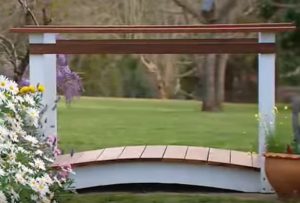
Next, measure and cut the planks to fit around the rail posts before returning them to the bridge.
Finally, add handrails to match the planks of the bridge! Secure the handrails to the posts with 2 wood screws through each post on both ends of the bridge.
That’s all there is to it! Enjoy your brand-new garden bridge! Place it over a small creek, water feature or uneven sloping on your property.
At GNH Lumber, we have everything you need to create your beautiful garden oasis. For more guidance, tips and ideas, stop in to our Greenville or Windham locations, or visit us today online!
Sources: Great Home Ideas, How To Build A Backyard Bridge, Handcrafted Garden Bridges, Footbridge Page 1, Handcrafted Garden Bridges, Footbridge Page 2

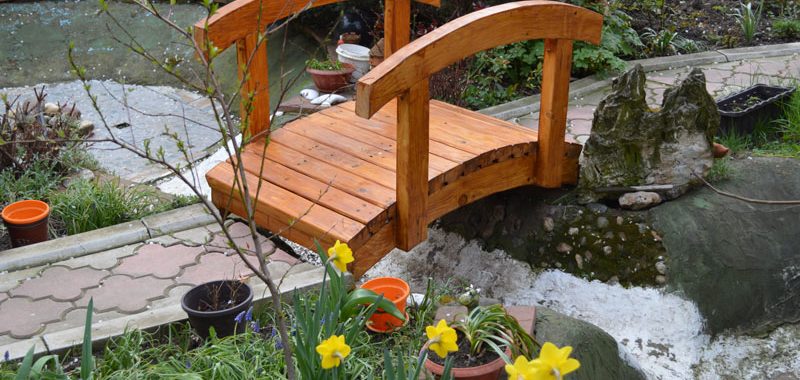

 Canning fruits, vegetables, sauces and preserves may appear difficult at first, but once you become familiar with a few basic techniques and precautions, you’ll find it quite simple, and enjoyable. Here are a few basic canning tips to keep in mind.
Canning fruits, vegetables, sauces and preserves may appear difficult at first, but once you become familiar with a few basic techniques and precautions, you’ll find it quite simple, and enjoyable. Here are a few basic canning tips to keep in mind.

 From colorful pots and planters, to decorative garden accessories, Bloem has something unique for every gardener of every age. Their planters not only get the job done, but they provide a splash of personality to any space.
From colorful pots and planters, to decorative garden accessories, Bloem has something unique for every gardener of every age. Their planters not only get the job done, but they provide a splash of personality to any space.